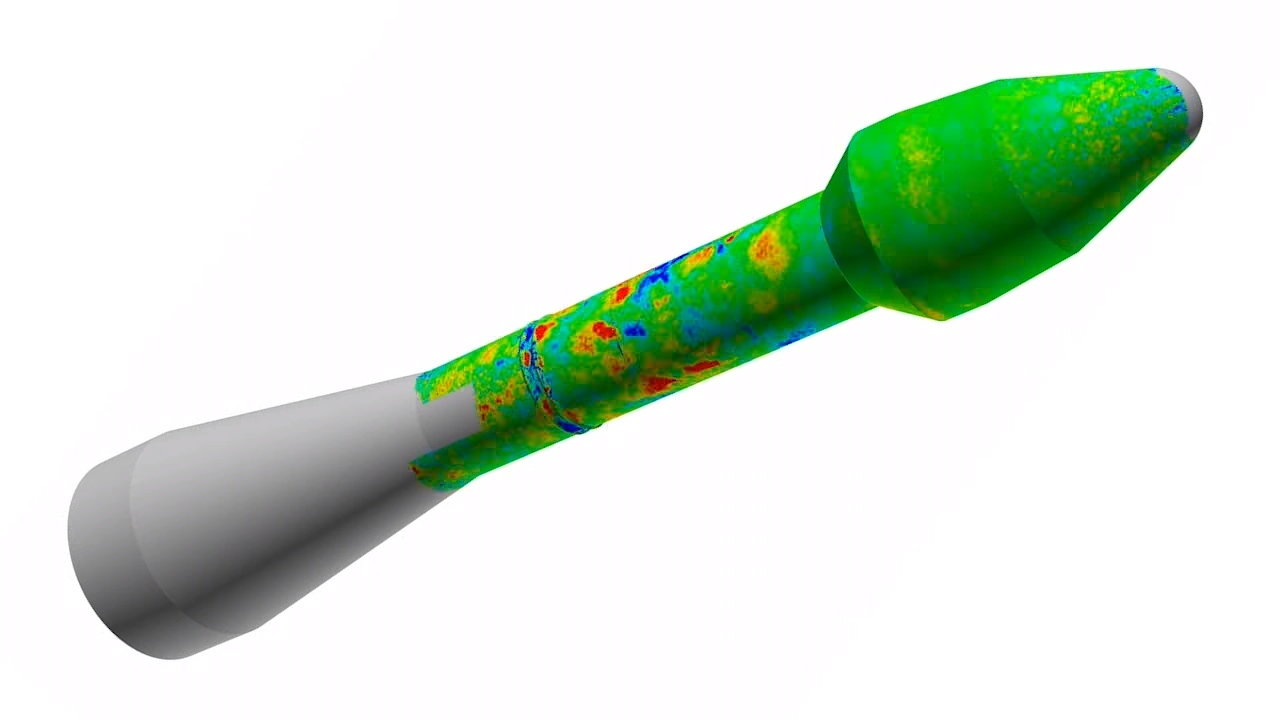
I just went through a 24-hour blood pressure monitoring and it's not fun. A cuff around your arm gets pumped up every 15 minutes and you wear a walkman size device all day and night. Health tech...
 Soft robotics allow machines to move in ways which mimic living organisms, but increased flexibility usually means reduced strength, which limits its use. Now, scientists at MIT CSAIL & Harvard have developed origami-like artificial muscles that...
Soft robotics allow machines to move in ways which mimic living organisms, but increased flexibility usually means reduced strength, which limits its use. Now, scientists at MIT CSAIL & Harvard have developed origami-like artificial muscles that...
 How can NASA make sure its rockets are ready to handle the intense buffeting produced during launch? Scientists have recently started using pressure-sensitive paint that reacts with oxygen to produce light. That way, scientists can actually visualize...
How can NASA make sure its rockets are ready to handle the intense buffeting produced during launch? Scientists have recently started using pressure-sensitive paint that reacts with oxygen to produce light. That way, scientists can actually visualize...
Outside of pen input, pressure sensors don't get much love these days. However, Georgia Tech has just built an extremely accurate sensor that could give pressure-based devices their due. When a user pushes down on the new invention, its grid of zinc-oxide nanowires emits light that's captured by fiber optics underneath at a very sensitive 6,300DPI. The combination of high resolution with light-speed responsiveness could lead to touch surfaces that capture far more detail than we're used to. While computing interfaces are clearly prime candidates for the technology, Georgia Tech also sees potential uses in pressure-based fingerprint readers and even devices that simulate touch with skin-like behavior. We've reached out to the school for more information regarding its long-term plans, but it already anticipates improving the sensors with more efficient manufacturing techniques. Take a closer look at the sensor after the break.
Update: We've since had a chance to follow up, and we're told that commercialization is likely five to seven years ahead.
Source: Georgia Tech
Flexible circuitry is frequently a one-way affair -- we've seen bendy displays and touch layers, but rarely both in one surface. UC Berkeley is at last merging those two technologies through a plastic skin whose display reacts to touch. By curing a polymer on top of a silicon wafer, the school's researchers found that they could unite a grid of pressure sensors with an OLED screen; they just had to remove the polymer to create a flexible skin. As the film-like material can be laminated on just about anything, it maylead to touch displays in places where they were previously impractical, or even very thin blood pressure sensors. It could also be easy to produce -- since the skins use off-the-shelf chip manufacturing techniques, commercial products are well within reach.
Filed under: Science
Via: Phys.org
Source: UC Berkeley
After a long and awkward delay, there's been some movement in the saga known as "Surface Pro's Pen accessory won't work with the software that could most benefit from it." Microsoft's Panos Panay tweeted yesterday that he had a beta driver from Wacom that had enabled his Pen's pressure sensitivity in Adobe Photoshop. Around the same time, an updated driver ("Enhanced Tablet Driver 7.1.1-12") appeared on Wacom's site, which PocketNow reckons contains the necessary fix. This file may not be final, and there's no specific reference to Microsoft's tablet in its changelog, but it's definitely worth a try at the source link below. Meanwhile, if you're one of the artistic types who's been holding off from buying a Surface Pro until this is resolved, then maybe just stay patient a little longer until more users report back on their progress. We're giving it a go ourselves, and in any case we've been assured by our own contacts at Microsoft that there'll be a happy ending within days.
Filed under: Tablets, Software, Microsoft
Source: Panos Panay (Twitter), Wacom